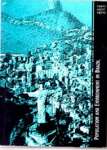Olá, identifique-se ou cadastre-se para fazer pedidos
- Login
- Cadastre-se
-
Estantes
- Recém Chegados
- Mais Procurados
- 4 por 1
- Administração
- Agricultura
- Animais de Estimação
- Antropologia
- Arqueologia
- Arquitetura e Urbanismo
- Arte
- Artes
- Artes Culinárias e Técnicas
- Artesanato
- Astronomia
- Atlas E Mapas
- Auto-ajuda
- Autoajuda
- Bebidas
- Biblioteconomia
- Biografia
- Biografia
- Biografias e Histórias Reais
- Biologia
- Botânica
- Brasil
- Budismo
- Câmeras e Foto
- Carros
- Ciência Política
- Ciências
- Ciências Exatas
- Cinema
- Comida Saudável
- Comportamento
- Computação
- Comunicação
- Concursos
- Contabilidade
- Contos e Crônicas
- Crítica Literária
- Crônicas
- Culinária e Gastronomia
- Decoração
- Desenho
- Design
- Dicionários
- Didáticos
- Didáticos e Educação
- Dieta
- Direito
- Dvd
- Ecologia
- Economia
- Economia Internacional
- Educação
- Educação Geral
- Enciclopédias e Coleções
- Engenharia
- Engenharia e Transporte
- Ensino de Idiomas
- Erótico
- Escolas e Ensino
- Esoterismo
- Espiritismo
- Esportes
- Esportes e Lazer
- Estatística
- Etiqueta
- Fantasia
- Ficção Científica
- Filosofia
- Fisica
- Folclore
- Fotografia
- Gastronomia e Culinária
- Genealogia
- Geografia
- Guerra
- História
- História Do Brasil
- História Geral
- Hobbies
- HQs
- Humor
- Infantil
- Informática
- Inglês e Outros Idiomas
- Jogos
- Jornalismo
- Jovens e Adolescentes
- LGBT
- Língua
- Linguística
- Literatura Brasileira
- Literatura e Ficção
- Literatura Estrangeira
- Literatura Infanto-juvenil
- Livros Raros
- Logistica
- Mangá
- Marketing
- Matemática
- Medicina
- Medicina e Saúde
- Meditação
- Meio Ambiente
- Metereologia
- Metodologia de Pesquisa
- Mitologia
- Moda
- Moda, Beleza & Dicas
- Música
- Natural e Vegetariana
- Nutrição
- Oceanografia
- Odontologia
- Ofertas
- Outros Assuntos
- Pecuária
- Pedagogia
- Pesquisa Científica
- Pintura
- Poesia
- Policial
- Política
- Políticas e Adm
- Programação Neurolinguistica
- Psicanálise
- Psicologia
- Psiquiatria
- Quadrinhos
- Reflexão
- Religião
- Religião e Espiritualidade
- Romance
- Saúde
- Saúde e Família
- Sexualidade
- Sociedade e Ciências Sociais
- Sociologia
- Sonhos
- Teatro
- Turismo e Guias de Viagem
- Turismo e Guias Turísticos
- Ufologia
- Viagens e Turismo
- Vinil - LP
- Volta às Aulas




AVALIAÇÕES LEITORES